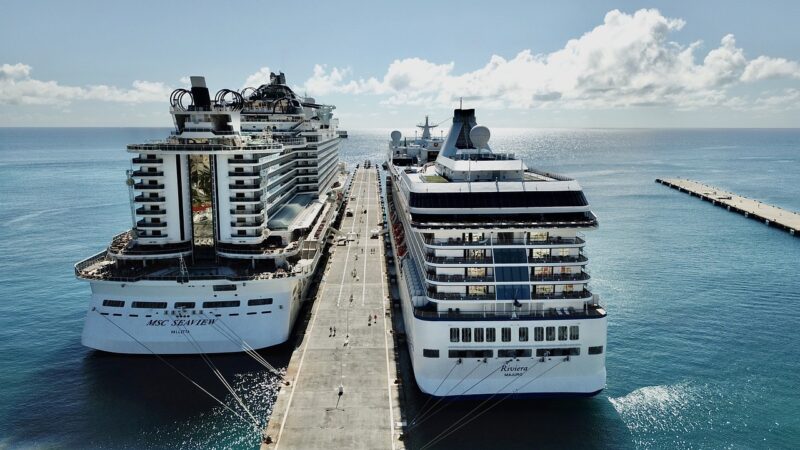
The vast expanse of the ocean has always held a certain allure, but it is the islands scattered across these waters that have become synonymous with tales of adventure, danger, and piracy. With their lush landscapes, hidden coves, and strategic locations, islands have played a pivotal role in shaping pirate lore and the legends of the high seas. In this exploration of pirate history, we will uncover how islands facilitated piracy, contributed to the mythology surrounding pirates, and helped to form the iconic image we often associate with these notorious sea rogues.
1. The Geography of Piracy: Islands as Strategic Bases
The geographical positioning of islands in the Caribbean, the Mediterranean, and the South China Sea made them ideal strategic bases for pirate operations. Locations such as Tortuga, Nassau, and Madagascar were sought after by pirates for multiple reasons:
- Shelter and Refuge: Islands provided safe harbors where pirates could rest, refit their ships, and replenish supplies. These remote locations allowed for secretive gatherings away from prying eyes of naval authorities.
- Trade Routes: Many islands were positioned along critical trade routes, providing easy access to valuable shipping lanes where pirates could ambush merchant vessels laden with treasure.
- Hideouts for Looted Goods: Pirates often stashed their stolen treasures on remote islands, where local inhabitants or small communities had little means to interfere with their operations.
Ultimately, these strategic advantages transformed islands into essential hubs of pirate activity. They became not only bases of operation but also breeding grounds for pirate communities who shared tales and honed their craft.
2. Tortuga: The Infamous Pirate Haven
Tortuga, an island located off the northwest coast of Hispaniola, stands as one of the most notorious symbols of piracy. In the late 17th century, it became a vital sanctuary for buccaneers and privateers. Here’s why Tortuga holds a significant place in pirate lore:
- Cultural Melting Pot: Tortuga was home to a diverse mix of Europeans, including French, Spanish, English, and Dutch pirates. This cultural divergence led to unique customs, rituals, and, notably, pirate codes that governed their conduct.
- Lawlessness: The island operated outside the jurisdiction of any nation, allowing pirates to indulge in reckless abandon. This reputation contributed to the romanticized image of pirates as free-spirited rebels who lived outside societal norms.
- Pirate Governance: Tortuga even saw the creation of pirate councils and loose governance, where leadership was often based on merit and daring. Pirates enacted their own rules, often aiding in the development of the infamous ‘pirate code.’
Tortuga has thus solidified its role as an essential chapter in the narrative of piracy, making it a focal point for stories and legends.
3. The Caribbean: A Network of Pirate Outposts
Beyond Tortuga, the Caribbean itself is dotted with islands that contributed to the rich tapestry of pirate lore. Islands such as Nassau, the Bahamas; St. Thomas; and Port Royal in Jamaica played significant roles:
- Nassau as Pirate Capital: In the early 18th century, Nassau was overtaken by pirates, becoming known as a ‘pirate republic.’ With minimal governance and heavy pirate activity, it attracted infamous figures like Blackbeard and Charles Vane, becoming a symbol of lawlessness and adventure.
- St. Thomas and Trade: St. Thomas emerged as a trading center where pirates could mingle with merchants. The island’s strategic position allowed pirates to acquire supplies while maintaining connections to legitimate trade, further complicating the interplay between piracy and commerce.
- Port Royal: The ‘Wickedest City on Earth’: Known for its debauchery and excess, Port Royal was a haven for pirates and privateers. It became infamous for its taverns, gambling, and ultimately, its devastating earthquake in 1692 that swallowed much of the town. The lore surrounding Port Royal has led to countless tales of hauntings and treasures still lying beneath the waves.
These various islands acted as hubs for piracy, proving that the Caribbean itself was more than just a backdrop—it was an active participant in the stories that emerged from the high seas.
4. Myths, Legends, and the Pirate Archetype
The islands where pirates operated also contributed to the myths and legends surrounding them. As stories of daring escapades and buried treasures emerged, so did the iconic image of the pirate:
- Treasure Maps and Buried Gold: Legends of hidden treasure buried on remote islands sparked countless treasure hunts. The idea of X marking the spot became a hallmark of pirate imagery, leading to stories like Robert Louis Stevenson’s ‘Treasure Island.’
- The Jolly Roger and Pirate Identity: The infamous pirate flag, the Jolly Roger, became synonymous with piracy itself. The black flag adorned with skull and crossbones symbolized fear and rebellion against authority. Many islands served as the backdrop for infamous ships flying this flag while carrying out their daring raids.
- Supernatural Myths: Many islands were rumored to be haunted by the spirits of pirates who met their demise. Stories of ghost ships and supernatural beings added an eerie layer to pirate lore, blending fact with fiction and enhancing the allure of piracy among seafaring culture.
The image of the pirate has evolved from ruthless sea villains to legendary figures tied intricately to the history and mythos of their island havens.
5. Modern Cultural Depictions of Pirate Islands
Today, the legacy of pirate lore continues to thrive through modern media, from films to literature and even theme parks. The portrayal of islands in contemporary discussions about piracy often draws on the enchanting tales of the past:
- Movies and Literature: Films like ‘Pirates of the Caribbean’ have reignited interest in these tales. The islands depicted are often combinations of myth and fantasy but draw on the rich historical context created by real pirate havens.
- Pirate Festivals and Tourism: Many Caribbean islands celebrate their pirate heritage with festivals that honor the pirate lore. Events feature reenactments, treasure hunts, and the popularization of pirate-themed merchandise, merging history with entertainment for a modern audience.
- Education and Preservation: Historical sites related to pirates are preserved and celebrated. Museums and tours help educate visitors about the reality of these sea rogues, grounding the romanticized versions in careful historical context.
Islands, steeped in the lore of piracy, continue to inspire fascination and adventure, highlighting the interplay between actual histories and imaginative storytelling.
Conclusion: The Enduring Legacy of Islands in Pirate History
The legacy of islands in shaping pirate lore and legends remains an enduring aspect of maritime history. From the strategic havens that facilitated piracy to the rich stories that evolved around them, islands serve as a vital element in understanding how piracy was not merely a crime of the sea, but also deeply intertwined with cultural narratives and myths.
As we continue to uncover and explore these tales, it becomes evident that the romanticized image of the pirate will forever be linked to the enchanting islands that were once their stomping grounds, and they will continue to capture the imaginations of adventurers and historians alike for generations to come.







